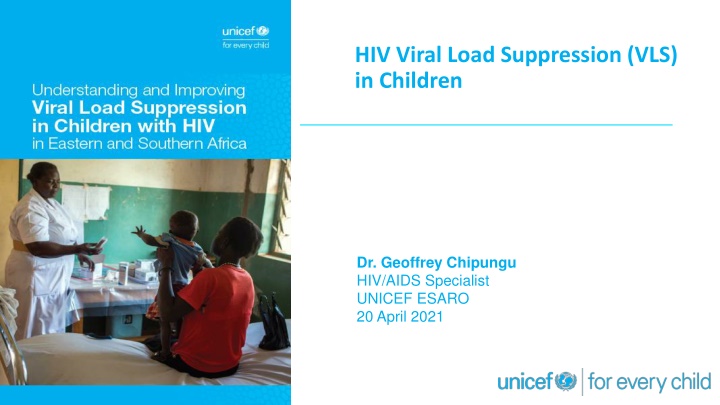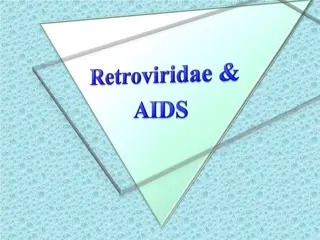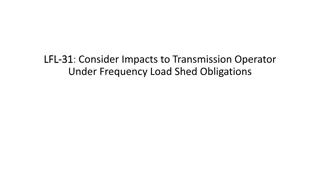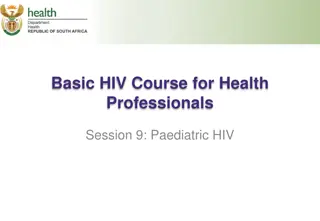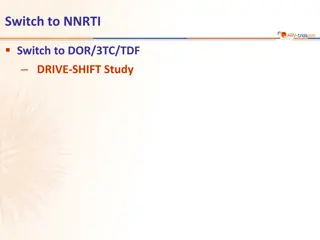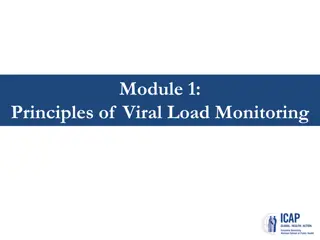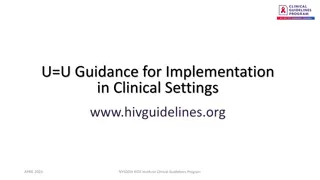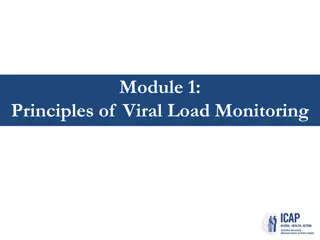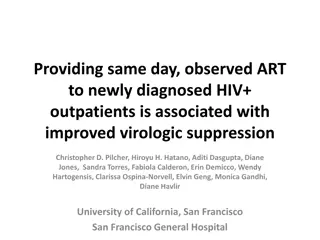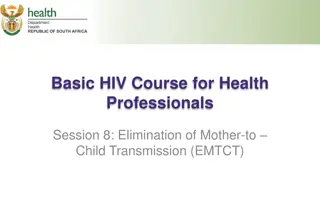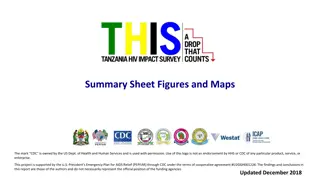Addressing Viral Load Suppression in Children with HIV: Insights and Recommendations
This study led by Dr. Geoffrey Chipungu, an HIV/AIDS Specialist at UNICEF ESARO, explores the rates, trends, and factors associated with HIV viral load suppression (VLS) in children. The research reveals sub-optimal VLS rates in children compared to adults, highlighting the need for improved policies and programs to enhance pediatric HIV care and outcomes. Data analysis from Malawi, Uganda, and Zimbabwe, along with qualitative insights, shed light on challenges in achieving VLS in children with HIV.
Download Presentation

Please find below an Image/Link to download the presentation.
The content on the website is provided AS IS for your information and personal use only. It may not be sold, licensed, or shared on other websites without obtaining consent from the author.If you encounter any issues during the download, it is possible that the publisher has removed the file from their server.
You are allowed to download the files provided on this website for personal or commercial use, subject to the condition that they are used lawfully. All files are the property of their respective owners.
The content on the website is provided AS IS for your information and personal use only. It may not be sold, licensed, or shared on other websites without obtaining consent from the author.
E N D
Presentation Transcript
HIV Viral Load Suppression (VLS) in Children Dr. Geoffrey Chipungu HIV/AIDS Specialist UNICEF ESARO 20 April 2021
Outline Outline
Why this study? Why this study? VLS indicates successful virologic, immunologic and clinical outcomes. Population-based studies found sub-optimal VLS for children with HIV (0- 14 years), especially compared to adult VLS. VLS among children with HIV falls short of the 3rd 95 of the UNAIDS 95- 95-95 targets. We set out to explore the rates, trends and factors associated with VLS to inform paediatric HIV policies and programmes
Study Framework Study Framework Quantitative Data Collection & Analysis 1.LIMS secondary data analysis (Malawi, Uganda, Zimbabwe) 2. Clinical records review (Malawi) Literature Review 1.Guidelines 2.Program reports 3.Peer reviewed journals Qualitative Data Collection & Analysis (Malawi) 1. Caregiver Interviews 2. Health worker interviews Report and advocacy brief Triangulate Results
Viral load volumes and data quality Viral load volumes and data quality Finding 2016 2017 2018 # of VL eligible for analysis for <15 y.o. 66,158 71,941 121,370 The reason for viral load test was not always indicated 93% 81% 82% ART regimen was not always indicated 68% 59% 57% Duration of ART was not always indicated 75% 66% 71% Disproportionately few viral loads were done post IAC 1.2% 3.9% 4.2% Yet fewer VL were done for suspected treatment failure 0.3% 0.2% 0.1%
Viral Load Suppression Trends in children Viral Load Suppression Trends in children The study found that one out of every three children who had a viral load test had not achieved viral load suppression.
Combined VL Cascade for CLHIV for the 3 countries Combined VL Cascade for CLHIV for the 3 countries 350,000 304,000 292,000 300,000 270,000 250,000 Estimated CLHIV (<15) 200,000 Estimated CLHIV on ART 178,000 171,000 164,600 Routine VL done 150,000 Routine VL non-suppressed Post IAC VL 94966 100,000 Post IAC VL suppressed 64334 55676 50,000 30882 19670 18610 5141 2774 1668 822 775 278 0 2016 2017 2018 https://data.unicef.org/resources/dataset/hiv-aids-statistical-tables/
Factors associated with VLS Duration on ART 70% (5-9 years) vs 65% (<5 years) ARV formulation Initial 74% vs Switched 60% Adherence Clinic appointments: 64% vs 59% VLS Nutrition status (n=66) Normal 87%, moderate 50%, severe 77% Health facility-related Schedules, staff shortage, perceived child-unfriendly setup, space Psychosocial support for the caregiver and child
Conclusion Conclusion To reach the third 95 target much more needs to done on VL coverage and follow-up. Children are more likely to achieve VLS when they and their caregivers have support from families, communities and health workers. Drug regimens and formulations continue to impede children s VLS. Health care quality, accessibility and affordability have a direct impact on children s adherence. Multi-sectoral challenges (food security, poverty) affect treatment success. Lack of documentation, storage and utilization of data in both the LIMS and patient records was common.
Taking Action Provide multi-year support to caregivers and children with HIV. Promote paediatric viral load testing and adopt efficacious, child-friendly regimens. Strengthen paediatric service delivery coverage, accessibility and quality. Improve case management with multi-sectoral linkages and referrals. Work toward smarter paediatric HIV data management systems. Generate useful paediatric HIV implementation research. http://www.childrenandaids.org/vls-clhiv
Acknowledgements Children, caregivers and health workers who participated in the study Respective Ministries of Health UNICEF ESARO and country offices Kundai Moyo and Edward Chigwedere, V and E Consultants Judith Sherman, Independent Consultant
